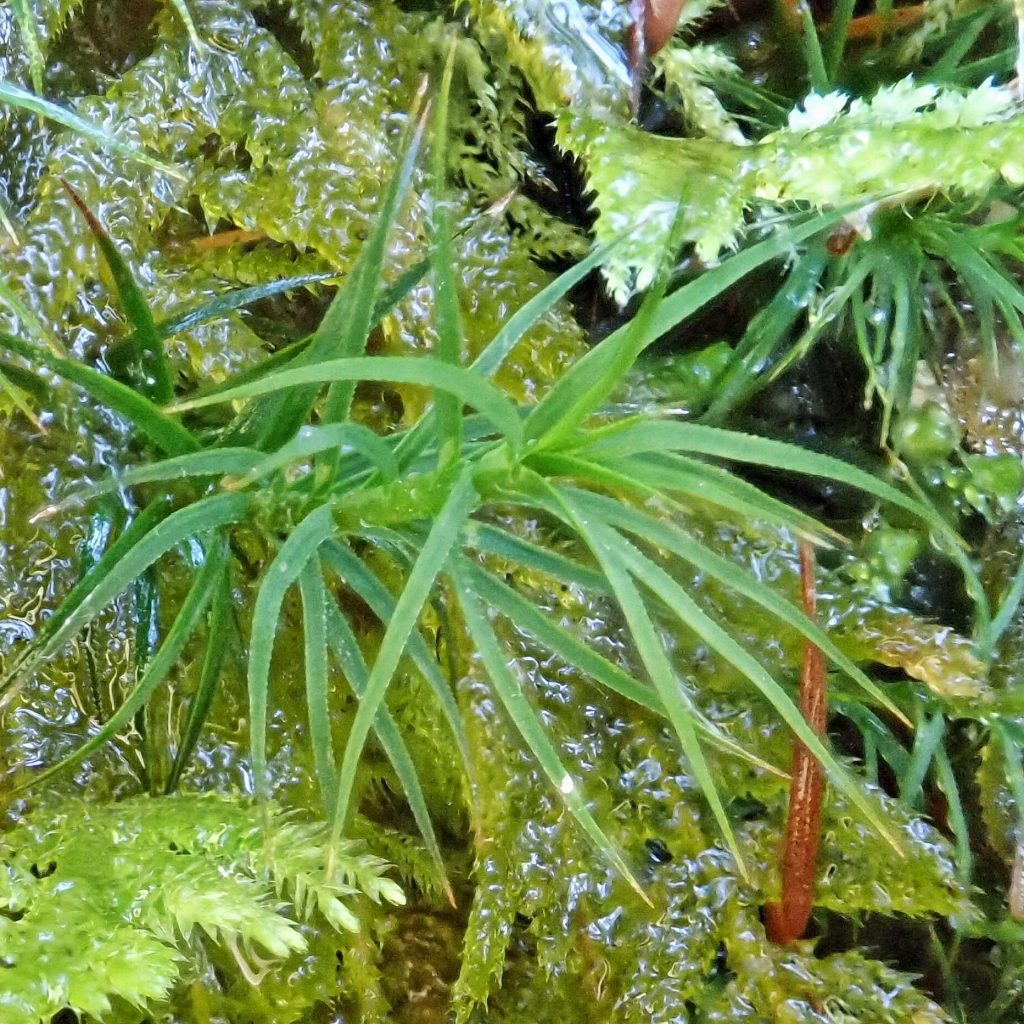
Another moss, another misidentification, but this one wasn’t as egregious as many, since I merely mistook papillose (having bumps) lamellae tips for pockmarked and striated ones. This mistake pushed me towards Meiotrichum lyallii, and thus I missed the fact that that species has shorter, broader leaves. But, as usual, Terry McIntosh dragged me back to reality, with, I’m relieved to admit, relatively little kicking and screaming on my part.
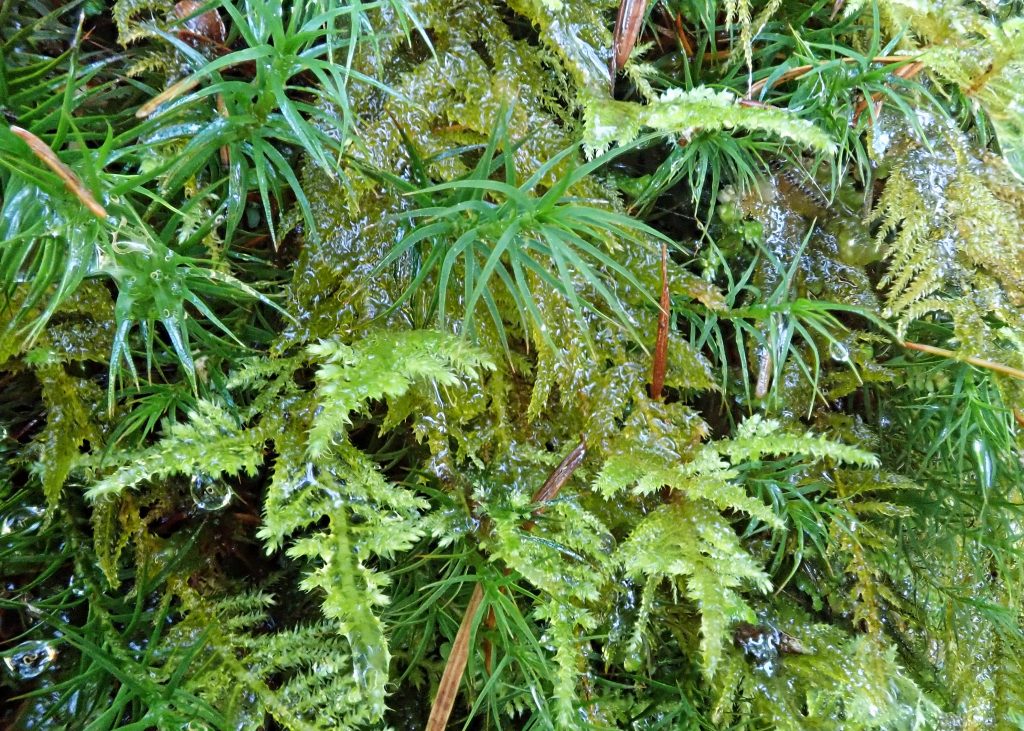
This was a particularly interesting specimen under the microscope. For one thing the leaves of Polytrichastrum alpinum look much like a yucca or aloe plant leaf, with an opaque trough and impressively toothed margins. The opacity is caused by tall, thick, dense rows of lamellae covering most of the width of the leaf.
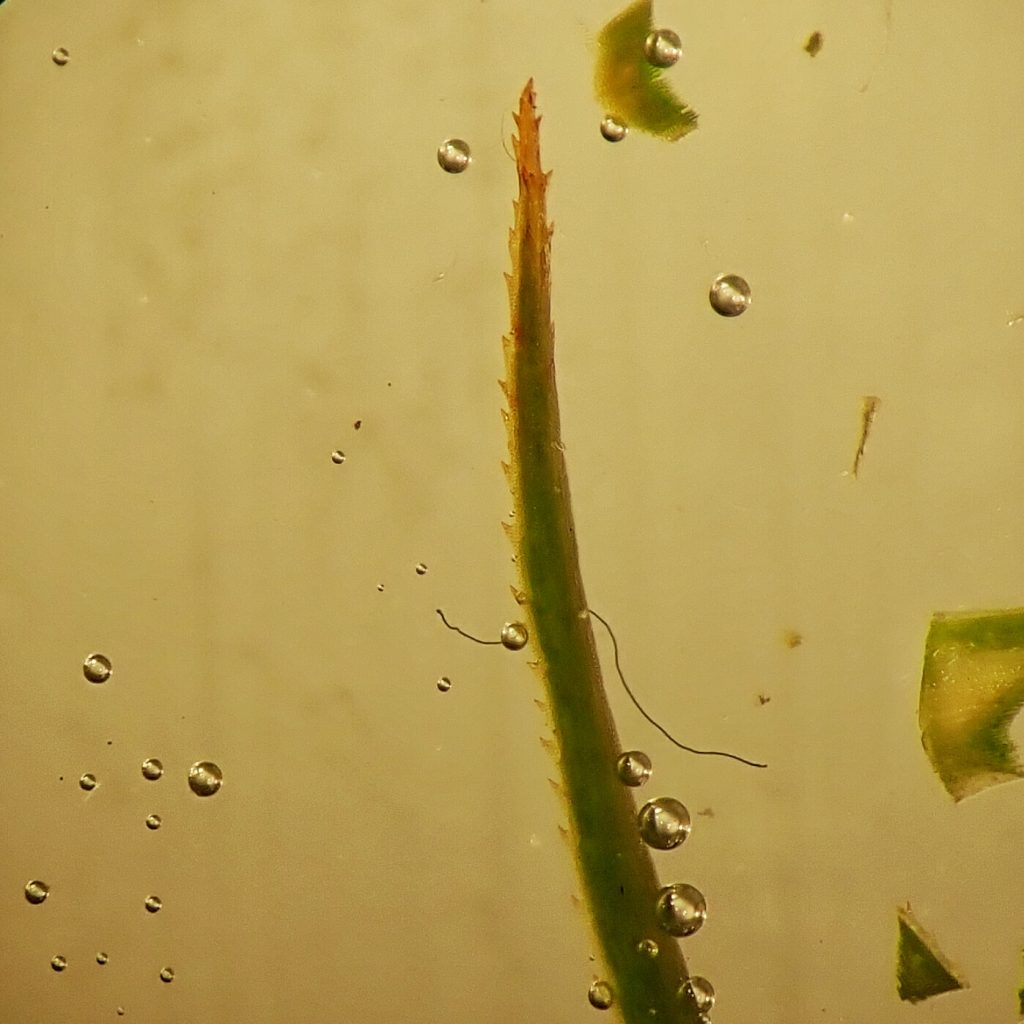
The lamellae themselves were quite compelling to look at, and I learned a few tricks about leaf dissection trying to isolate a strip of it that I could view from the side. Finally these clumsy and indelicate meathooks managed, undoubtedly with a helping hand from sheer luck, to extricate a 35 micron wide section, so that I could confirm the presence of papillae. This brought me an inordinate amount of joy and satisfaction, and I must confess to doing a bit of a jiggy dance when I interrupted the reading of my long suffering wife to show her the photograph of my eventual success.
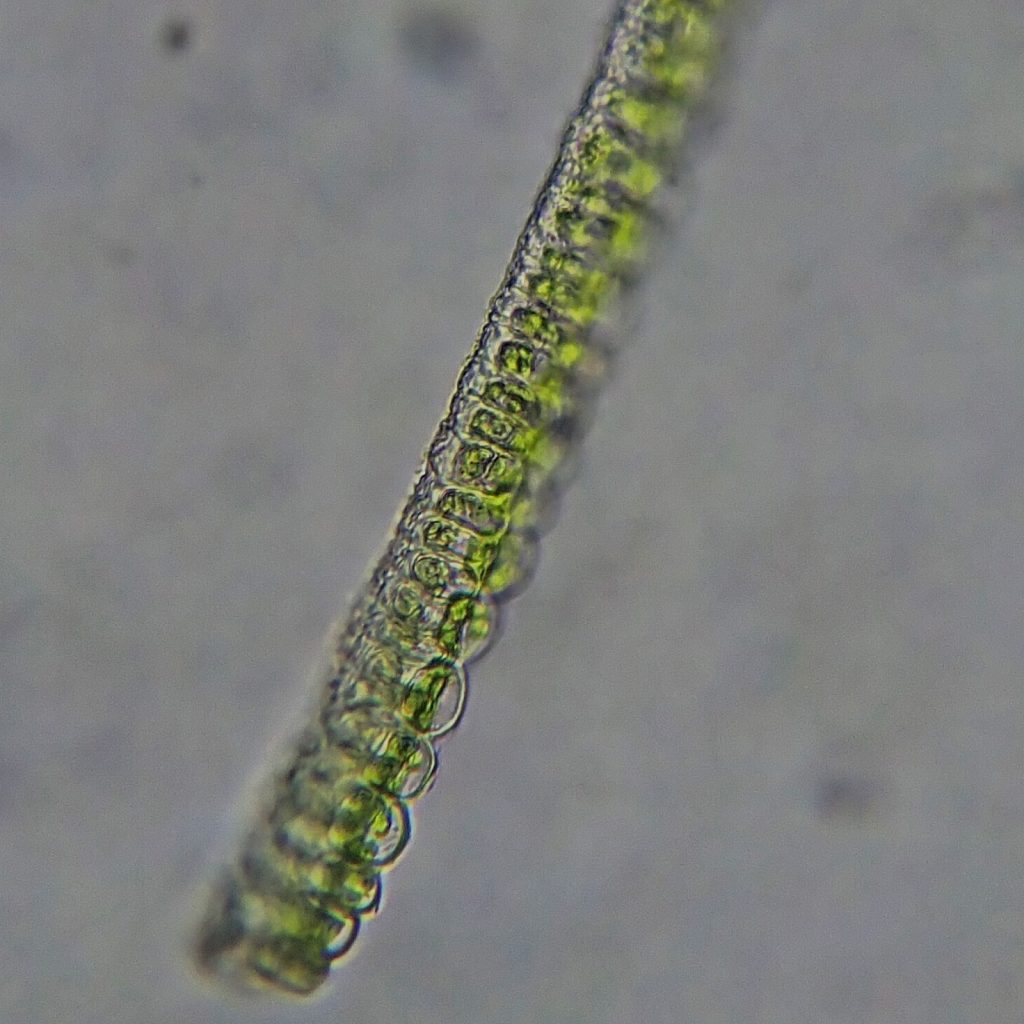
There are 3 subspecies of P. alpinum in our region, and this is var. sylvaticum. It tends to grow at lower elevations than the other two, and to be taller with longer leaves. These specimens were near the upper end on leaf length at 18mm long.
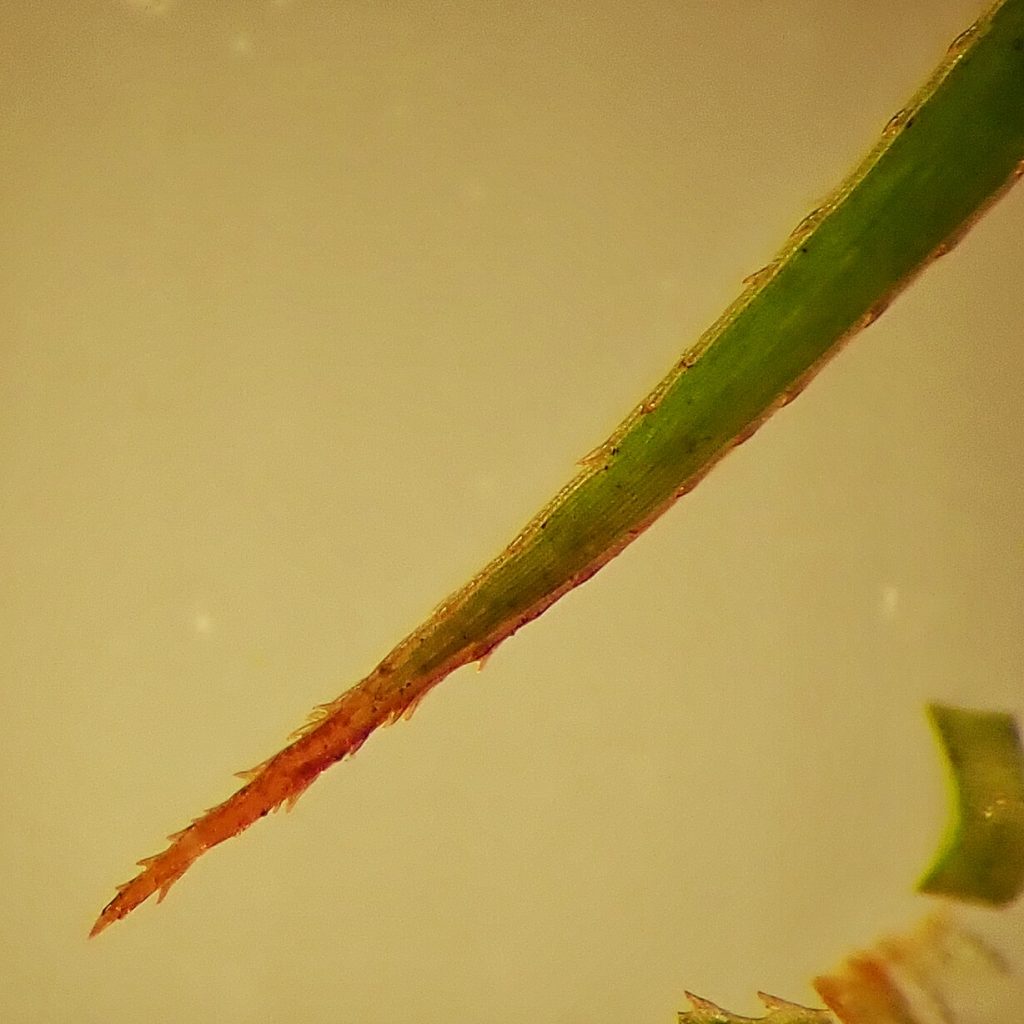
I found this population on a wide ledge on The Cliff, an area with relatively deep and well drained dry soil. This part of The Cliff faces northeast, without much tree cover, and probably receives more direct sunlight than any part I’ve explored so far.
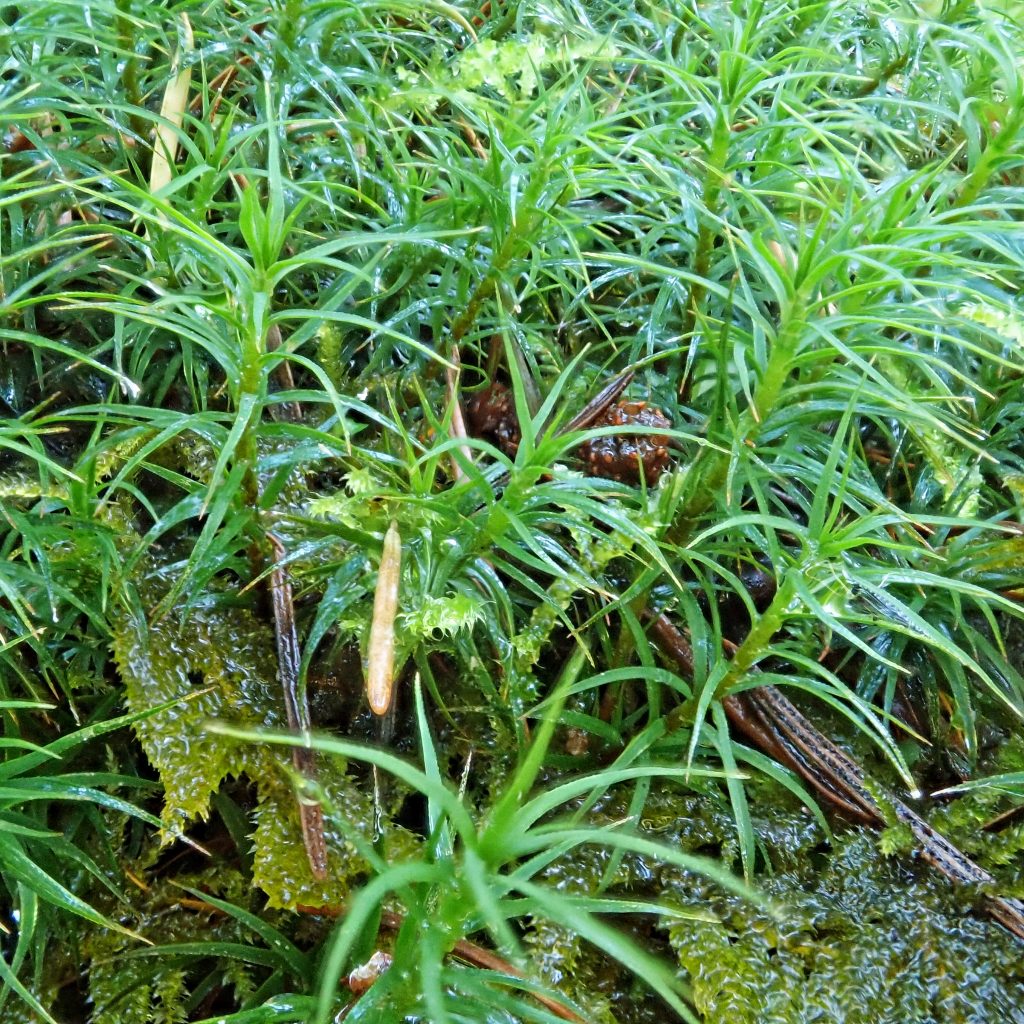
Description-Fairly tall (up to 15cm), erect, acrocarpous moss; it has long (up to 19mm), narrow (about 10 times as long as wide), opaque leaves; margins bear large, sharp, slanted teeth with a wide base; lamellae 30-50 rows wide, 5-9 cells high, terminal cells papillose.
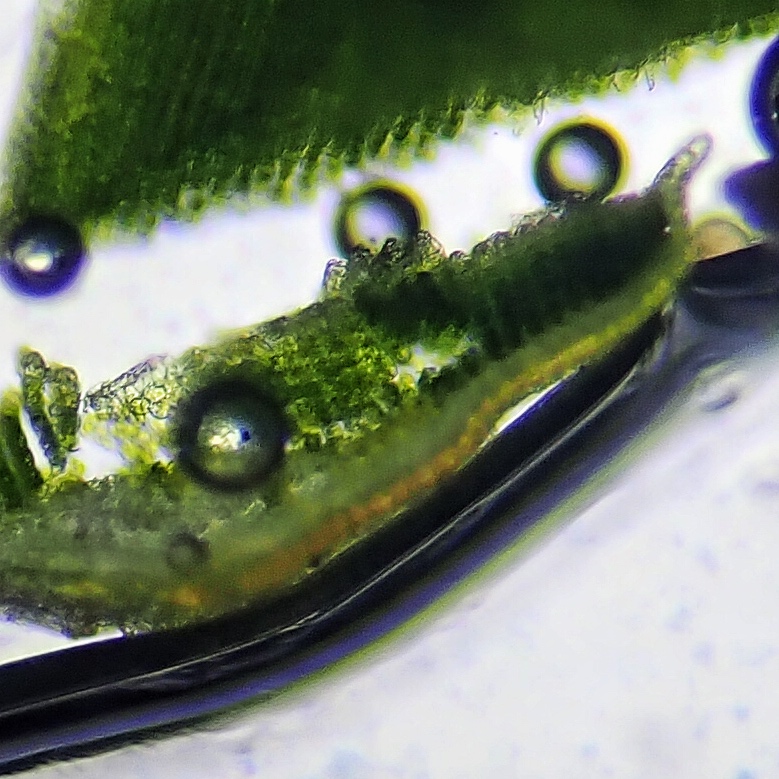
Similar species– Meiotrichum lyallii leaves tend to be shorter and broader, and the uppermost cells of the lamellae are pockmarked and striated, rather than papillose; Pogonatum urbigerum has even shorter, broader leaves (although still about 6-7 times as long as wide), which are a bluer green, with redder stems; these three cannot be positively differentiated without magnification and a key, or a great deal of experience.
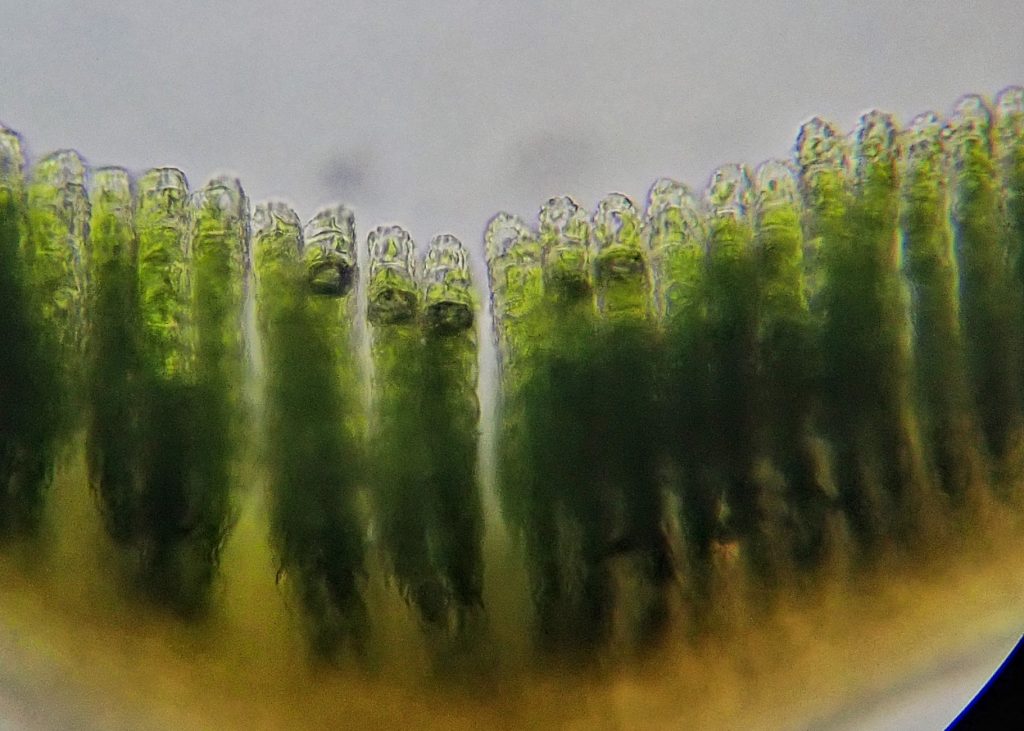
Habitat-On soil, sometimes on banks or rotting logs, in mesic forests up to 4000’
Range-Region wide in appropriate habitat; most common west of Cascades
Reproductive timing– Spring/summer
Eaten by-Phyllotreta striolata (Striped Flea Beetle) will feed on these in the absence of mustards.
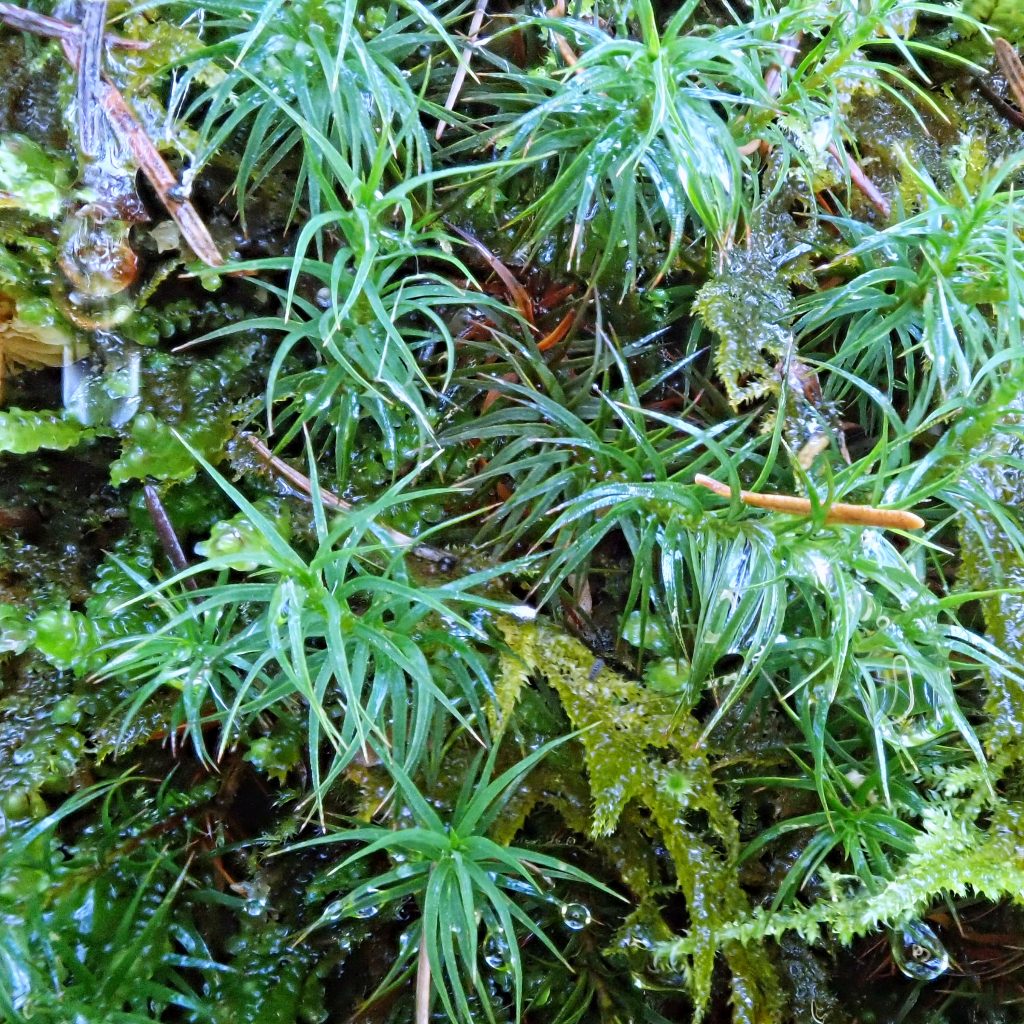
Etymology of names– Polytrichastrum means ‘almost like’ Polytrichum, which is the genus this species belonged to for most of its described history. The species epithet alpinum means ‘of the mountains’, and sylvatica means ‘in the forest’, descriptive of the usual environmental milieu for this lowland subspecies.
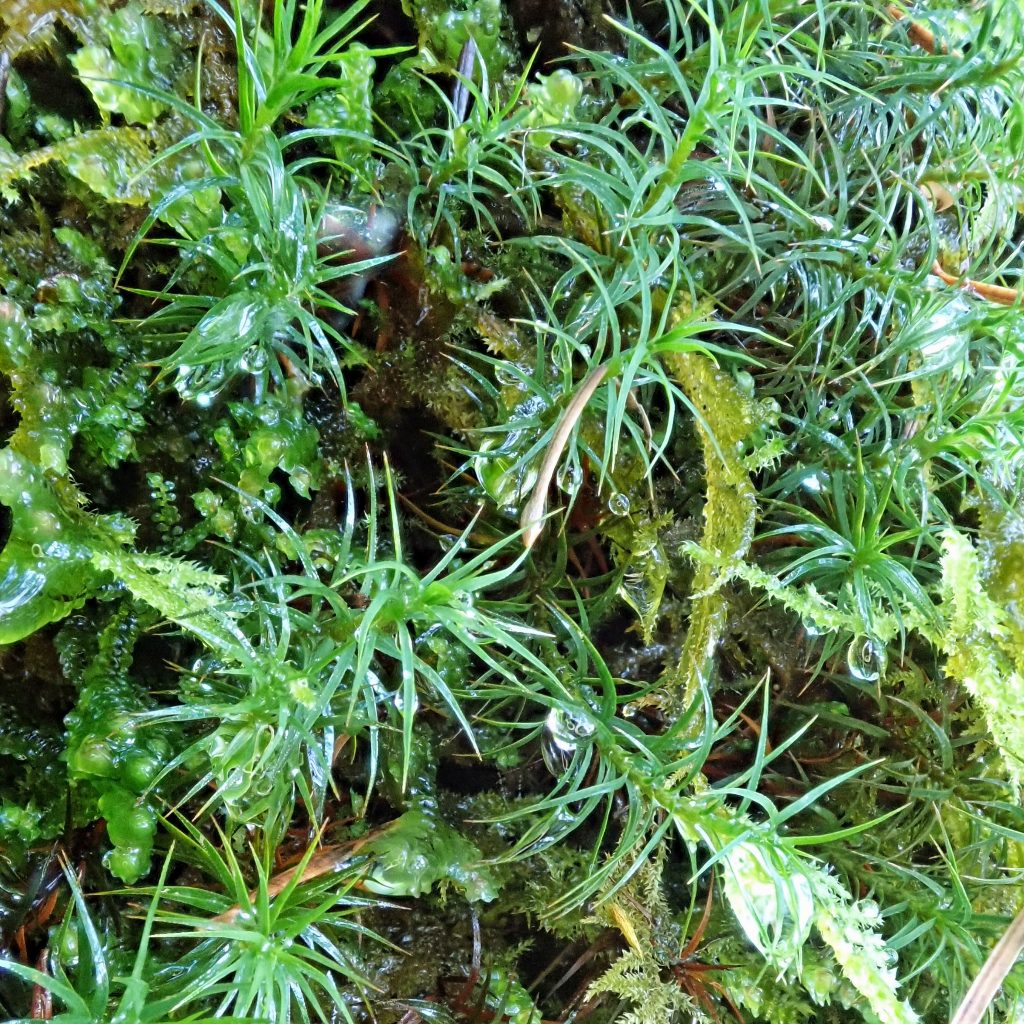
https://www.centralcoastbiodiversity.org/alpine-haircap-moss-bull-polytrichastrum-alpinum.html
https://wnmu.edu/academic/nspages/gilaflora/polytrichastrum_alpinum.html
http://www.efloras.org/florataxon.aspx?flora_id=1&taxon_id=250065218
http://www.efloras.org/florataxon.aspx?flora_id=1&taxon_id=250065223
https://ucjeps.berkeley.edu/cgi-bin/get_moss_treatment.pl?taxon=Polytrichastrum%20alpinum
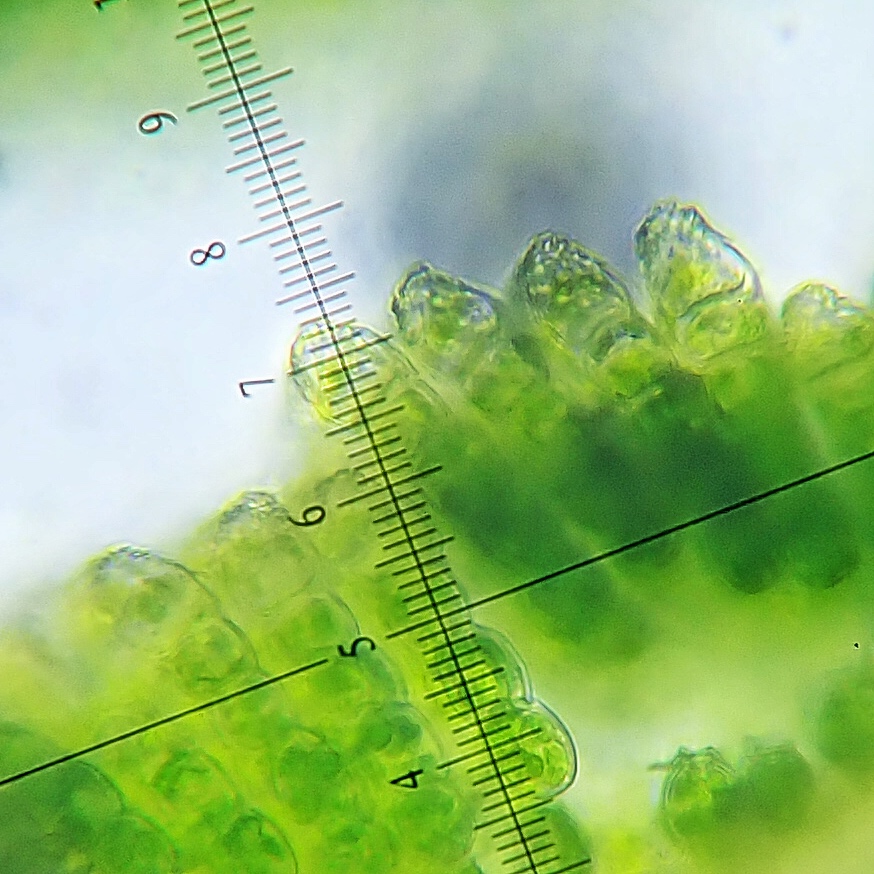
😆
Polytrichastrum lamellae are so cool under the microscope! What is your microscope setup, if you don’t mind my asking?
I love reading about how you come to your ID’s. Thank you!
I have a trinocular AmScope stereoscope, and a binocular AmScope compound microscope.
Thank you for the quick response!
Glad you enjoy reading about! For all my periodic frustrations there is nothing I’d rather do!